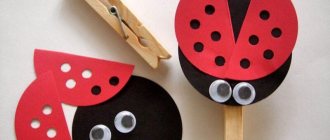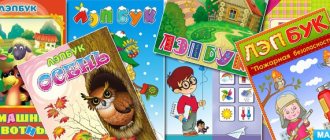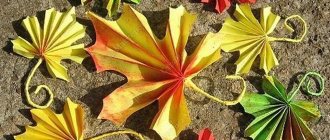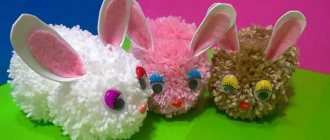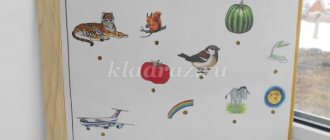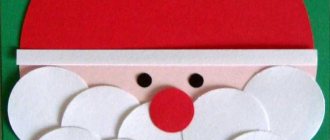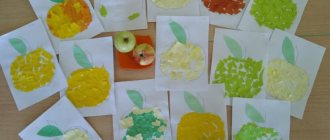How to make paper with your own hands at home from newspapers, grass and other available materials, which your child can then use for various paper crafts, read our article with a detailed master class on making paper.
An experiment with making paper with your own hands combines three important and interesting components for a child: science, creativity and design. This method relatively simply describes the process of making paper from inexpensive and accessible materials that can be found at home and in the country.
An important role here is played by the fact that paper making in this master class can be adjusted to the child’s wishes. Do you want something girly? Try making glitter paper. Need to do something about the excess plants in your garden? Make paper from plants. Do you have a lot of scraps of unnecessary paper that you hate to throw away? Mix them in paper in patchwork style.
The paper making process itself is not complicated, but quite labor-intensive, requiring materials and preliminary preparation.
To make your own paper you will need:
For a special frame shape:
- 2 wooden frames or two embroidery hoops;
- fiberglass;
- stapler or staple gun and paper clips;
- hammer and nails.
For paper:
- used paper;
- blender;
- warm water;
- pieces of felt;
- large flat tray;
- sponges;
- newspaper;
- large plastic container (basin) - it should accommodate the frame and deckle in a horizontal position and allow your hands to hold the frame;
- Velcro tape (optional).
How to make a frame and deckle for DIY paper crafting
What is this deckle? This is a paper form, a special format frame. The hole in the deckle will determine what size the finished piece of paper will be. Imagine cupcakes that spread without a tin. The same will happen with paper. For the master class, the “you will need” item listed two ordinary wooden frames. Buy ones that don't have a layer of laminated paper on them, otherwise it will start peeling off the frame once submerged in water.
To make a paper craft frame, follow these steps:
- Remove the packaging and cardboard backing from the frame. Cut a piece of fiberglass about 1/2 inch smaller than the edge-to-edge size of the frame.
- Using a staple gun or staple gun, attach the fiberglass to the frame. Make sure it fits snugly. Try to nail so that the fiber does not sag in the middle.
- Secure the frame joints by driving a nail into each edge. Inexpensive frames are often glued only at the joints and fall apart after repeated exposure to water.
A deckle is the same frame, only without a backing.
Types of paper
To understand how paper is made, you must first determine its type, because the composition of the raw material can be different.
There are the following types of material:
- Offset. Widely used in printing - for printing books and mass printed products. The paper is resistant to moisture, which is important since humidifiers are used in offset printing.
- Packaging. Durable, impervious to moisture. There are no increased requirements for color and smoothness.
- Newspaper. Used for printing on high-speed equipment. Its feature is increased paint absorption.
- Coated. Differences from other types - whiteness, smoothness. High-quality illustrated publications are printed from it.
- Cellulose. Consists of pure cellulose plus 1-3% additives. Used for printing banknotes and securities.
Designer paper for gift wrapping
Preparing a “station” for making paper yourself at home
Before you start making your own paper, you need to set up an assembly line to ensure the process goes smoothly. Arrange all the necessary equipment in stages:
Stage 1. Blender: This is where warm water comes in handy. Stage 2. Basin: it should be filled with warm water about 7-8 cm. Also at this stage you will need a frame, deckle and Velcro tape. Stage 3. Draining the water: the felt, flat spacer and sponges should be right here, right next to the basin. Stage 4. Drying: Lay out several newspapers to dry the paper.
Now you're ready to make paper! Stock up on warm water, 8-10 sheets of scrap paper and start making paper with your own hands with your child.
Packing and cutting
The method of cutting paper rolls differs depending on the plans for its use. The rolls are cut in a slitter and then wound into several rolls of smaller volume and diameter. Then they are divided into ready-made sheets for the printing shop - for example, by laser (the edges are neat, there is no carbon deposits on them).
Finished paper rolls
The last stage of paper making is packaging. Its most common types:
- packaging in packs of 250-1,000 sheets, wrapped in kraft paper or other dense and waterproof material;
- palletizing - transferring sheets onto flat rectangular stands with recesses for gripping and fastening;
- mixed method - first the sheets are collected in bundles and then placed on pallets;
- "roll" packaging (rolls up to 10-15 kg) - suitable for technical, large-format packaging paper (can be carried manually, without ramps or special equipment).
How to make paper with your own hands at home
A step-by-step master class on how to make paper with your own hands from waste paper.
Stage one - blender
Tear the paper into small pieces and pour them into a blender. Add water there so that its level is slightly higher than the level of the paper. Close the blender with a lid, hold it tightly and grind the paper. You should end up with a papery pulp.
Stage two - basin
Pour the paper pulp into a bowl and gently stir with your hands. Take the frame with the grain facing up and cover it with deckle. Using Velcro tape, you can secure the frame and deckle, or hold them firmly with your hands.
We lower the frame and deckle into a basin with paper pulp and water. Carefully move the frame and deckle to grab the mush. Your goal is to have as even a layer of paper pulp on the fiberglass as possible. Moving quickly and harshly will result in an uneven layer, and not applying enough pressure will make the layer very thin, so this requires patience and practice. Once the layer of paper pulp is ready, carefully remove the frame and deckle from the bowl in a horizontal position. Let the water drain.
Stage three - draining the water
Remove the frame from the bowl. Remove the Velcro tape and deckle. Place a piece of felt on the wet future sheet of paper and carefully turn the paper over onto the tray. Using a sponge, squeeze the water out of the paper through the fiberglass. Now you need to very carefully remove the fiberglass. The thinner the paper, the more likely it will stick to it. If this happens, put the frame back on the tray and try to soak up a little more water with a sponge.
Stage four - drying
Now the sheet of paper should lie on top of the felt. Transfer it in this form to the drying area. Carefully turn the felt over onto the laid out newspaper. The wet paper should now be under the felt. Carefully lift one corner of the felt and remove the entire piece. If the paper is still sticky, you haven't removed enough water. Take the sponge again and blot the paper through the felt. Leave the piece of paper to dry overnight. Or you can iron it through newspaper.
Tips and tricks for making DIY paper at home
- The first sheets will be thicker, and the subsequent ones will be thinner, as the paper pulp will be consumed.
- The thinner the sheet, the more carefully you need to remove it from the frame and peel it off the felt. The paper can tear easily.
- It is easier for children to work with thicker sheets of paper.
- The paper pulp will lighten in color as it dries, so don't worry if you end up with a gray colored mess in the blender.
- To even out the dried paper, you can iron it. Paper with confetti and glitter cannot be ironed, and for regular paper you should not use high temperatures so as not to burn the paper you make yourself.
- Do not mix paper that may fade, otherwise you will end up with a grey-brown incomprehensible mass.
- After repeated use, the fiberglass will begin to sag, so it needs to be reattached more tightly.
Presentation for older preschoolers “Paper. History of origin. Making paper."
Brief description of the document:
Goal: Formation of older preschoolers’ ideas about paper. Objectives: Educational: To acquaint pupils with the history of the origin of paper, with the stages of its production in modern conditions; To clarify and expand children’s ideas about the types of paper and some of its properties. Developmental: To develop cognitive activity, the research interest of older preschoolers in studying the world around them. Educational: To educate ecological culture, respect for nature. Presentation: 1 slide. Presentation title Paper. History of origin. Paper making. Paper properties. 2 slide. In ancient times there was no paper and books. Ancient people depicted moments of their lives using drawings on rocks and stones. For our contemporaries, these are original “books” from which we learn about the activities, life, and traditions of our ancestors. 3 slide. Then the peoples who lived in Mesopotamia began to use small tablets made of clay to record information. Symbols were applied to wet clay tablets with a sharp stick, after which the tablet was dried in the sun to give it strength. 4-5 slide. Papyrus is a writing material obtained from a plant of the same name that grew in the marshy areas of the Nile Delta. The lower part of the stem, about 60 centimeters long, was freed from the outer green layer, and the white core was removed and cut into thin strips with a knife. After this, the resulting strips were kept in fresh water for 2-3 days. Next, the softened strips were rolled over a board with a wooden rolling pin and placed in water for a day, rolled again and placed in water again. As a result, the stripes became translucent. Next, they were stacked on top of each other, dehydrated under pressure, dried and smoothed with a stone. 6-7 slide. Parchment was obtained by special, very complex processing of the skins of young animals - calves, lambs, goats and donkeys. Unlike papyrus, parchment was much stronger, more elastic, more durable and could be written on both sides. Making parchment was a very difficult process, and therefore this material was very expensive. 8 slide. In Rus', our ancestors used birch bark or, as it is also called, birch bark as a “notebook”. On the inside of the bark, letters were written with a tool made of metal or bone. This writing device was called a writing device. Slide 9 Bamboo books were made from thin bamboo plates, held together into a single sheet by two rows of string. The Chinese book was similar to modern sliding curtains. 10 slide. For the first time, the technology for producing paper from plant fibers was developed in China. The ancient manual technology of making paper was as follows: the raw material was ground and boiled with the addition of glue and water to obtain a homogeneous fibrous mass. The cooked mass was scooped out with a special mold and tipped onto a smooth surface. The resulting sheet was pressed, dried, and smoothed. Later in Europe they learned to make it from mulberry bark. Since mulberry is a southern plant and is not widespread everywhere, European scientists were looking for a different material for making paper. We tried to make it from unnecessary rags. A sticky mass was boiled from old rags, then the water was squeezed out using a press and paper was obtained. Wood became a cheaper material. 11 slide. Paper production Stage 1: Wood harvesting 12 slide. Paper is produced at a paper mill or paper and pulp mill. Slide 13 Wood chopping. At the factory, machines strip the bark from the wood and grind it into chips. Slide 14 The crushed wood is boiled with the addition of various substances and dyes. Slide 15 The paper pulp, turned into pulp, enters the paper making machine. First, the slurry is poured onto the mesh of the paper machine. 16 slide. The raw paper strip passes through a series of rollers. Some rollers squeeze out the water, others, heated from the inside by steam, dry it, and others polish it. Slide 17 A smooth white strip of paper comes out of the machine and is wound into a huge roll. Then these rolls are sent to printing houses, where they are cut into sheets. 18 slide. Types of paper. Discussion with children: What kind of paper is there? Where is it used? 19 – 21 slides. Paper properties. Conducting experimental research activities. Properties: Paper tears, gets wet, burns, is cut with scissors, crumples. 22 slide. Interesting! One tree produces 2857 notebooks of 12 pages. It takes 60 years to grow a mature tree. That is why it is important to use books, albums and notebooks carefully, because all of these are cut down trees. Paper can be produced from waste paper. 100 kg. old paper will help save 1 tree. 23 slide. Save the tree - hand over the waste paper!
How to make your own paper from plants
This paper smells amazing! Small flowers and leaves will add natural magic to the paper, and for the smell you need to choose aromatic herbs: oregano, fennel flowers, marigolds, curry, rosemary and mint. To make herbal paper, collect a cup of a variety of plants and add to the paper mixture. To make it more beautiful, tear the grass finely and separate the petals. If there are still natural materials left, make a flower stained glass window from paper with your child.
What is paper made of?
The raw materials are plant substances with long fibers. Mixing with water, they form a pliable, homogeneous semi-finished product. It is made from:
- wood - the mass is called cellulose;
- annual plants: material of increased whiteness is made from hemp or rice mass, strong and dense material is made from straw and reed;
- secondary raw materials - waste paper, rags;
- raw materials for the production of special-purpose paper - wool, asbestos and other fibers.
The main material in the paper industry is wood. Entire trunks are supplied to mills. There they remove the bark and cut them. Next, the raw materials are ground into flour - to fiber fibrils.
In this form, the wood is supplied for grinding into flour.
For paper production they use:
- pine, cedar - soft woods are suitable for the manufacture of packaging materials;
- maple, oak - the hardwood base is smooth, but less durable;
- Canadian spruce - a durable but elastic material is made from it;
- chestnut, birch and so on.
By mixing oak and pine raw materials, book paper is obtained. It is durable and elastic. To improve the quality of products, wood material is sorted, filtered, and treated with chemical compounds.
How to make DIY paper with confetti at home
Instead of using white paper, reach for multi-colored paper scraps, like old Christmas lights and confetti from a kid's birthday party. After mixing most of the paper into the mass, add a few extra colored scraps and spin in the blender a couple more times to get larger pieces of colored paper into the product. A great way to recycle paper yourself.
Paper Quality Criteria
- Strength - resistance to tearing and compression during high-speed printing must be high.
- Density - thin sheets are used for intaglio printing, thick sheets are used for packaging (range - from 60 to 300 g/m²);
- Smoothness - the higher it is, the better the image details are reproduced, the tighter the contact of the sheets with the printing forms;
- Whiteness - the indicator falls in the range of 60-98%;
- Opacity - the less the sheet is translucent, the less will be the degree of image development on the reverse side (for ordinary office paper - from 89%);
- Porosity - paint adheres better to porous material, but the prints lose their saturation.
- Abrasion Resistance – If it is low, the viscous printing inks will “pluck” fibers from the sheets and this will contaminate the parts of the printing equipment.
- Absorbency - the higher it is, the faster the paint will adhere to the surface of the sheet.
- The presence of sizing - with it the top layer will be durable, resistant to moisture and glue.
Watch an interesting report from a paper production plant:


